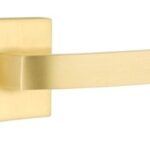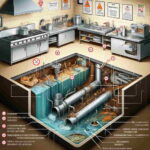Types of Masonry: Brick, Stone, and Concrete – Which One Is Right for You?

Manhattan homeowners face a unique challenge when choosing masonry: balancing durability, style, and long-term maintenance.
Some decisions just feel bigger than they look. Choosing what holds up your home—literally and visually—is one of them. Brick, stone, concrete… sounds simple, right? But in Manhattan, where every block has a personality and every season tests your building’s strength, this choice carries weight.
This guide explores how each material behaves in the real world. Not just in theory. From weather resistance to curb appeal, from aging gracefully to playing nice with your property’s history, it all matters. So let’s get into it—because masonry isn’t just about structure. It’s about what kind of story your home tells. And when the time comes to make that story real, working with trusted masonry contractors in Manhattan, NY can make all the difference.
Understanding the Three Main Masonry Types
Let’s start by laying the groundwork. Each material—brick, stone, and concrete—brings its own strengths, quirks, and demands. Think of them less like interchangeable blocks and more like distinct personalities.
Brick: The Soul of the City
- Made from: Clay or shale, fired until solid
- Look and feel: Smooth, earthy, structured. Reds, browns, russets.
- Often seen in: Façades, chimneys, garden walls, walkways
Brick is Manhattan’s heartbeat. It lines historic blocks, gives pre-war buildings their warmth, and stands tall on brownstone stoops. But it’s not just about charm. Good brick breathes—handling weather and wear with a kind of quiet resilience. Local masonry contractors in Manhattan often turn to brick when aiming for timeless appeal with proven reliability.
Stone: The Quiet Powerhouse
- Sourced from: Granite, limestone, bluestone, and more
- Texture and vibe: Raw, organic, heavy with presence
- Best used for: Retaining walls, stoops, patios, luxury surfaces
Stone doesn’t just sit there. It commands. Granite feels solid as time itself. Bluestone offers a cooler, smoother look that fits beautifully in courtyards. Even softer stones, like limestone, bring a lived-in dignity. Every slab tells a slightly different story—which, frankly, is part of the appeal.
Concrete: Shape-Shifter of the Modern Age
- Made from: Cement, water, and aggregates—poured or pre-cast
- Visual range: Smooth or patterned. Polished or rough. Sleek or rugged.
- Often used in: Sidewalks, terraces, structural walls, urban patios
Concrete is the minimalist’s dream—but also the city’s workhorse. It adapts. Want it to mimic stone? It can. Prefer a stark, industrial finish? Also doable. Its strength lies in how well it bends to design while holding everything together.
Material Performance and Durability: A Side-by-Side Look
Let’s talk staying power. Because aesthetics fade fast if a material doesn’t stand up to NYC’s freeze-thaw cycles, pollution, or relentless foot traffic.
Weather Resistance
- Brick: Glazed brick shrugs off water like a raincoat. Unglazed? It’s more porous. In winter, absorbed moisture expands, causing surface flakes or cracks. Still, quality brick with tight joints holds its own for decades.
- Stone: Granite and quartzite are virtually indestructible. Acid rain, freezing temps—bring it on. Limestone and sandstone are more porous and develop surface wear over time. They’re not fragile, but they age with more visible signs.
- Concrete: Without sealing, it soaks up water like a sponge. That means cracks when the freeze hits. Air-entrained or fiber-reinforced mixes handle stress better. The finish also matters—polished concrete repels grime better than raw slabs.
Strength & Structural Load
- Brick: Strong under pressure (literally), especially in layered walls. But it needs help when supporting lateral forces.
- Stone: Granite? Practically bulletproof. Even softer stones can hold serious weight, though they may need base reinforcement.
- Concrete: With rebar, it’s the muscle behind many city structures. It can hold, bend, stretch—if engineered right.
What Happens Over Time?
- Brick: Think 70 to 100 years—easy. Minor signs like mortar erosion or salt deposits may show up after a couple decades.
- Stone: Dense stone can last well over a century. Softer stones may wear visibly after 30–50 years, especially in high-traffic zones. Still, they rarely fail—they just evolve.
- Concrete: Raw concrete may crack or stain within 15–25 years. But high-grade, well-sealed installations? You’re looking at 40 to 60 years, maybe more.
Urban Stress Factors
- Pollution: Soot, acid rain, and grime love textured, porous surfaces.
- Foot traffic: Stairs and patios take the brunt—especially in entryways.
- Shadows and moisture: Alley-facing walls or courtyard corners breed mildew, especially on unsealed materials.
Aesthetic and Architectural Considerations in Manhattan
In this city, curb appeal isn’t optional. Materials have to work hard and look the part.
Brick That Belongs
Brick slips seamlessly into most blocks. It honors Manhattan’s architectural DNA, whether it’s a 19th-century brownstone or a 1930s apartment complex. Its symmetry and subtle color shifts feel familiar—but never dull.
Stone That Speaks Up
Stone doesn’t whisper. It makes statements. Want gravitas? Use granite. Seeking softness? Go limestone. Either way, it blends elegance with presence. Bonus: each piece is one of a kind.
Concrete That Doesn’t Apologize
Concrete fits modern sensibilities. It can go industrial, architectural, even sculptural. Used right, it doesn’t just support—it defines the space. In a rooftop garden or minimalist courtyard, it carries the mood.
How Materials Age
- Brick: Darkens with city soot, but cleans up well. Adds character over time.
- Stone: Patinas form—gracefully. Bluestone grows richer, granite stays timeless.
- Concrete: Unsealed? Cracks and spots. Sealed and polished? Sleek for years.
Cost, Maintenance, and Installation Factors
Looks matter. So does longevity. But so does getting the work done in a place like Manhattan.
Ease of Installation
- Brick: Neat but fussy. Alignment and mortar take time.
- Stone: Slow, heavy, precise. Cutting and fitting are an artform.
- Concrete: Fast when poured. Precast pieces? Logistics-heavy.
Keeping It Looking Good
- Brick: Needs repointing every few decades. Occasional algae cleanup in shady spots.
- Stone: Mostly self-sufficient. Softer types benefit from sealing.
- Concrete: Reseal every few years to avoid stains and micro-cracks.
City-Specific Realities
- Permits. Always check.
- Landmark blocks? Rules apply.
- Tight spaces? Material access can be tricky.
Choosing What’s Right for You—and Your Contractor’s Role
Here’s the truth: you don’t need to know every detail about masonry. But you do need someone who does.
Start with What Matters to You
- Want low upkeep or standout visuals?
- Matching a historic style or going bold?
- Planning for kids, guests, resale value?
- How much seasonal wear are you okay with?
A Good Contractor Makes All the Difference
They’ll factor in:
- Material weight vs. your structure’s limits
- NYC permit hurdles
- Access issues (think cranes, scaffolding, alley clearance)
Ask These:
- Done this kind of job before?
- Local references?
- Recommendations tailored to your exact property?
Working with an experienced masonry contractor in Manhattan, NY helps navigate these questions while keeping your vision intact.
Conclusion
Brick, stone, and concrete all have their own rhythm. The right material does more than look good—it lives well with the city, the seasons, and your expectations.
Bottom line? Choose something that fits your home and your lifestyle. And pick a contractor who knows the terrain, the codes, and the quirks of Manhattan masonry.
When you’re ready, reach out to a trusted masonry contractor in Manhattan, NY. Your home deserves a partner who gets it—brick by brick.
FAQs
Q: How do I know which masonry material fits my property?
A: It depends on your building’s age, style, and setting. A brownstone might demand classic brick or stone. A rooftop patio on a newer condo could benefit from lightweight, sealed concrete. Think function, then aesthetics.
Q: What questions should I ask a masonry contractor in Manhattan?
A: Start here: Are you licensed and insured? Have you worked on properties like mine? What materials do you specialize in? Can you show local examples? The right answers help you spot pros from pretenders.
Q: Does one type of masonry last longer than the others?
A: Dense stone wins for raw longevity. Brick holds up for decades with care. Concrete varies—high-performance mixes can compete, but maintenance matters more.
FUQs (Frequently Unasked Questions)
Q: Will the weight of the material affect my existing structure?
A: Yes. Some buildings (especially older ones) can’t handle heavy stone or multi-layer brick without reinforcement. Contractors should evaluate your load-bearing capacity before suggesting materials.
Q: How do NYC weather and air pollution impact different masonry types?
A: Freeze-thaw cycles are brutal on unsealed concrete and porous brick. Pollution leaves grime and can stain lighter stones. Even with durable materials, exposure shapes how they age.
Q: Are there local regulations that affect which masonry types I can use?
A: Definitely. Landmark and historic districts often require specific materials or finishes. Even sidewalk changes may need approval. Local pros know what flies and what doesn’t.. Your home deserves a partner who gets it—brick by brick.








Leave a Reply